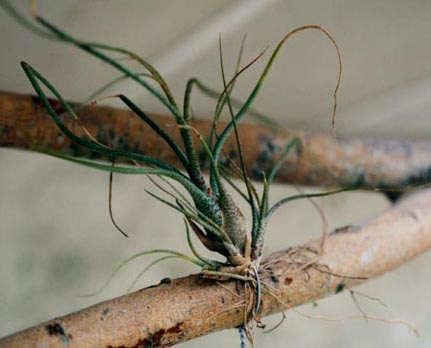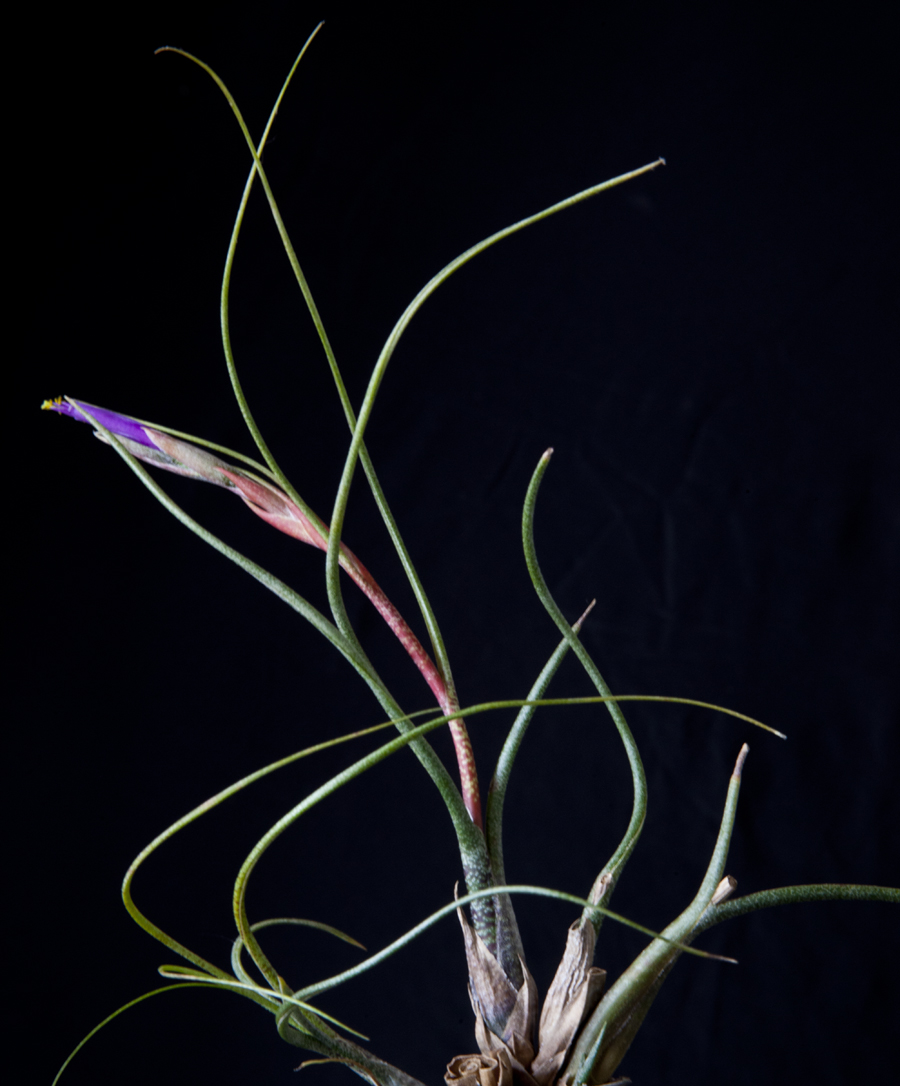|

Tillandsia butzii

Tillandsia butzii with flower spike Flower of Tillandsia butzii Flower of Tillandsia butzii

Flower of Tillandsia butzii showing anthers with pollen, the darker ones have finished the yellow ones are active and the single white stigma which traps the pollen

Large clump of Tillandsia butzii
|
Family: Bromeliad
Sub-Family: Tillandsioideae:
Genus: Tillandsia
Sub-Genus:
Native distribution: Native habitat and culture: Tillandsia butzi is from Southern Mexico and Central America, where it grows in large masses on trees. Able to withstand drought and sun, it grows high up at elevations of 1,200 to 2,100m.
Habit: Tillandsia butzi has fine leaves that resemble tapering twisted pieces of wire, but on closer inspection have a longitudinal fluting that is so tight the leaf wraps right around on itself to form the wire shape. They are green with an intricate fine dark brown or purplish broken banded pattern across them. The leaves expand from an inflated pseudo bulb, then narrow into the slender, spiralled wires shapes. It reproduces pups readily, even before flowering has taken place. Over time it forms large clumps with the wiry twisted leaves intertwined to the point that a colony can appear like a single plant.
Foliage:
Flowers: The flowering plant seldom exceeds 20 to 30cm in height, and the slender, erect scape bears a single spike with rose bracts and purple petals. The flowers are long, tubular, they have protruding stamens, and the petals are not keeled.
Seed:
Pups:
Cultivation: The plant also appears to grow well in dappled shade and responds to humidity - so mist it regularly in hotter conditions in the early morning or evening - avoid misting or watering in direct hot sun - water much less so in cooler conditions. Watering in the heat of the day in summer can burn the plant. My experience shows it can withstand temperatures up to 45 degrees C for a short period and down to near freezing in winter, again for a short period
Fertilization: A mist every week with Epiphyites Delight or Epsom salts during the growing season will help the plant.
( Epiphyte’s Delight fertilizer was developed for a special reason. Nitrogen promotes foliar growth. If you have Tillandsias, Orchids, or other epiphytes and you feed them, take a look at the nitrogen content. If it’s high in urea, the plants can’t use it because the urea needs a bacteria in soil to break it down into ammonia and nitrates. Since the epiphytes don’t have any soil they can’t break down the urea. It was for this reason that we had Epiphyte’s Delight formulated. It contains only ammoniacal and nitrate nitrogen which is immediately accessible and usable by the plants.)
Availability:
|